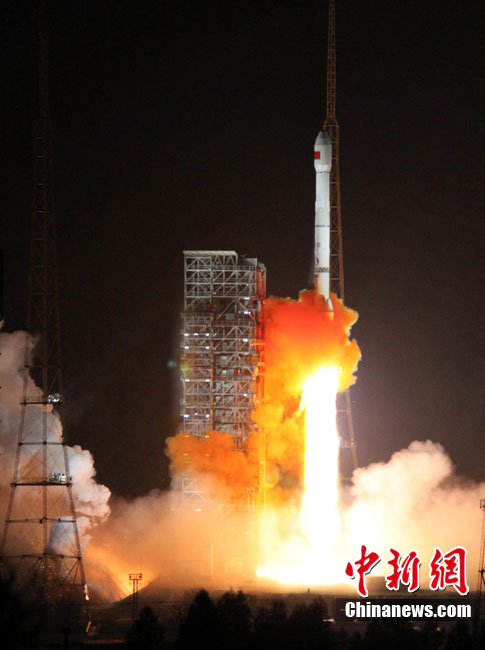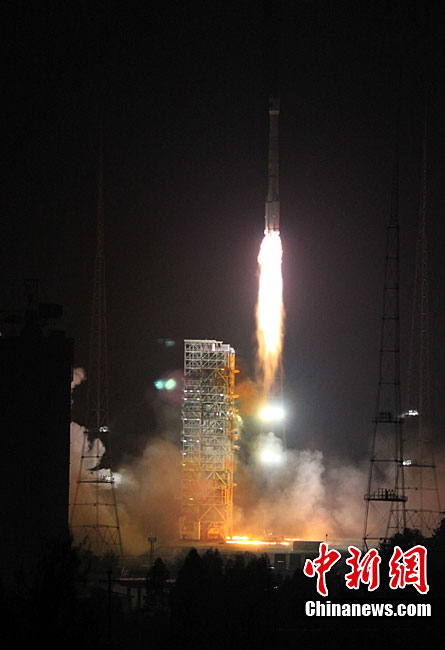kvLin
SENIOR MEMBER

- Joined
- Jan 17, 2007
- Messages
- 710
- Reaction score
- 0
Sinodefence:
China is planning to build a navigation satellite constellation known as Compass Navigation Satellite System (CNSS), or ââ¬ÅBeiDouââ¬Â in its Chinese name. The system will be based on its current Compass Satellite Navigation Experimental System (BeiDou-1), which will be able to provide navigation and positioning services to users in China and its neighbouring countries by 2008. The system will be gradually expanded into a navigation satellite constellation comprising 5 Geostationary Earth Orbit (GEO) satellites and 30 medium Earth orbit satellites, which can provide navigation and positioning services to global users. The first two satellites were scheduled to be launched in early 2007.
The CNSS will provide two types of services: a free service for civilian users will have positioning accuracy within 10 metres, velocity accuracy within 0.2 metre per second and timing accuracy within 50 nanoseconds; and a licensed service with higher accuracy for authorised and military users only. The system will initially cover China and its neighbouring countries only but will eventually extend into a global navigation satellite network.
Unlike the current Beidou Satellite Navigation Experimental System, which requires dual-way transmissions between the user and the central control station via the satellite, the new generation CNSS will allow ground receiver to calculate its position by measuring the distance between itself and three or more satellites, similar to the method of operation of the GPS and GLONASS systems.
The Peopleââ¬â¢s Liberation Army (PLA) has been pursuing a space-based navigation and positioning capability to improve the accuracy of its weapon systems and the situational awareness of its forces since the late 1990s. The Chinese civilian sectors, as well as some military research organisations, have been using the American GPS system and Russian Global Navigation Satellite System (GLONASS) to provide limited accurate positioning capabilities. However, an independent satellite navigation network would allow Chinese forces to maintain its satellite navigation capability in time of crisis without relying on foreign satellites.
Following the three successful launches of the BeiDou-1 satellites in 2000 and 2003, China began to launch the second-generation BeiDou-2 satellites in 2007. The first BeiDou-2 navigation experimental satellite was successfully placed into orbit on Saturday 3 February 2007. A CZ-3A three-stage space launch vehicle carrying the satellite lifted off from Xichang Satellite Launch Centre (XSLC) at 16:28 GMT on 2 February (00:28 local time on 3 February). The satellite was separated from the launch vehicle about 24 minutes later. Data from the Xi'an Satellite Monitoring & Control Centre showed that the satellite had accurately entered its planned orbit.
The satellite was placed into the GEO, presumably to complement the three existing regional Beidou-1 geostationary satellites by occupying the open slots at Longitudes 58.75 and 160 degrees East. A second launch is expected within few weeks.
BeiDou-2 Launch: The first BeiDou-2 satellite was launched on 3 February 2007 from Xichang Satellite Launch Centre by a CZ-3A space launch vehicle
China is planning to build a navigation satellite constellation known as Compass Navigation Satellite System (CNSS), or ââ¬ÅBeiDouââ¬Â in its Chinese name. The system will be based on its current Compass Satellite Navigation Experimental System (BeiDou-1), which will be able to provide navigation and positioning services to users in China and its neighbouring countries by 2008. The system will be gradually expanded into a navigation satellite constellation comprising 5 Geostationary Earth Orbit (GEO) satellites and 30 medium Earth orbit satellites, which can provide navigation and positioning services to global users. The first two satellites were scheduled to be launched in early 2007.
The CNSS will provide two types of services: a free service for civilian users will have positioning accuracy within 10 metres, velocity accuracy within 0.2 metre per second and timing accuracy within 50 nanoseconds; and a licensed service with higher accuracy for authorised and military users only. The system will initially cover China and its neighbouring countries only but will eventually extend into a global navigation satellite network.
Unlike the current Beidou Satellite Navigation Experimental System, which requires dual-way transmissions between the user and the central control station via the satellite, the new generation CNSS will allow ground receiver to calculate its position by measuring the distance between itself and three or more satellites, similar to the method of operation of the GPS and GLONASS systems.
The Peopleââ¬â¢s Liberation Army (PLA) has been pursuing a space-based navigation and positioning capability to improve the accuracy of its weapon systems and the situational awareness of its forces since the late 1990s. The Chinese civilian sectors, as well as some military research organisations, have been using the American GPS system and Russian Global Navigation Satellite System (GLONASS) to provide limited accurate positioning capabilities. However, an independent satellite navigation network would allow Chinese forces to maintain its satellite navigation capability in time of crisis without relying on foreign satellites.
Following the three successful launches of the BeiDou-1 satellites in 2000 and 2003, China began to launch the second-generation BeiDou-2 satellites in 2007. The first BeiDou-2 navigation experimental satellite was successfully placed into orbit on Saturday 3 February 2007. A CZ-3A three-stage space launch vehicle carrying the satellite lifted off from Xichang Satellite Launch Centre (XSLC) at 16:28 GMT on 2 February (00:28 local time on 3 February). The satellite was separated from the launch vehicle about 24 minutes later. Data from the Xi'an Satellite Monitoring & Control Centre showed that the satellite had accurately entered its planned orbit.
The satellite was placed into the GEO, presumably to complement the three existing regional Beidou-1 geostationary satellites by occupying the open slots at Longitudes 58.75 and 160 degrees East. A second launch is expected within few weeks.
BeiDou-2 Launch: The first BeiDou-2 satellite was launched on 3 February 2007 from Xichang Satellite Launch Centre by a CZ-3A space launch vehicle






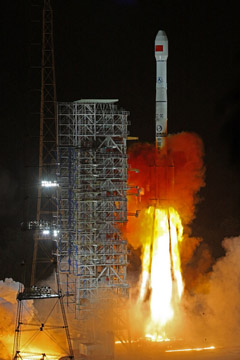

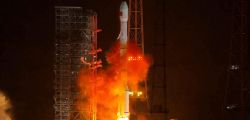
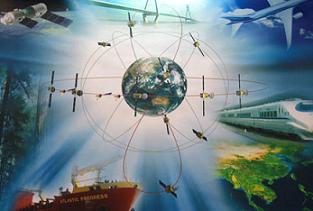





 we won't rely on gps entirely in the near future
we won't rely on gps entirely in the near future
